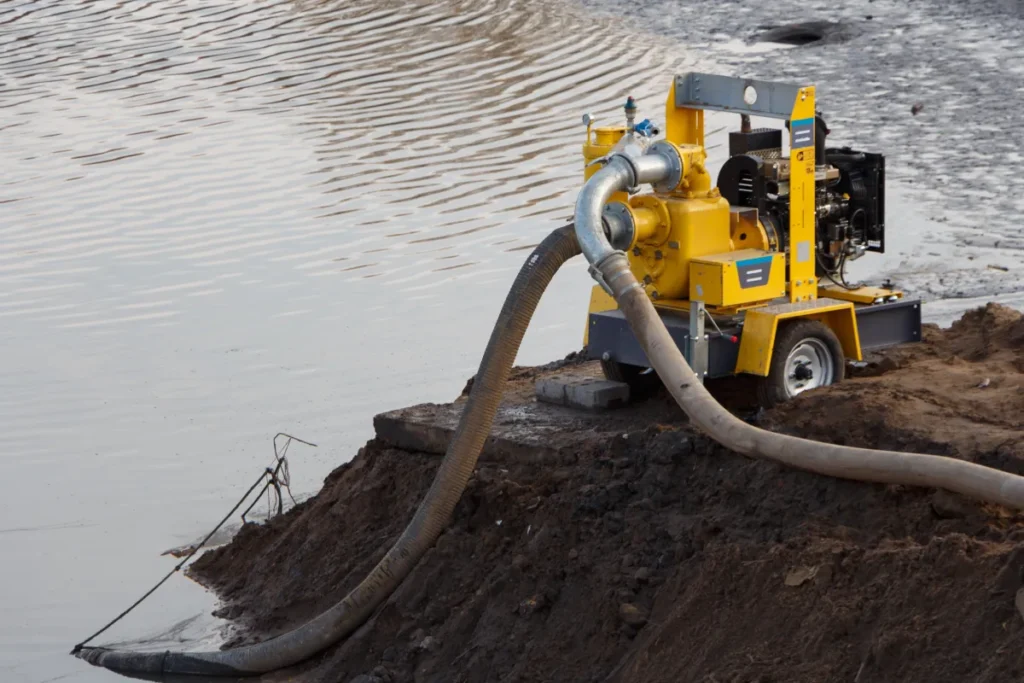Self-priming dewatering pumps aren’t just another piece of site equipment; they’re the workhorses behind uninterrupted progress in industries like mining, construction, and municipal infrastructure. When rain, groundwater, or unexpected flooding threatens to bring operations to a halt, these pumps step in, doing more than just moving water; they protect timelines, budgets, and safety. The choice between self-priming dewatering pumps and standard systems isn’t merely a technical one; it’s a decision that defines how resilient and efficient a project can be when faced with real-world challenges.
Self-priming dewatering pumps are engineered to automatically prime and re-prime without manual intervention, a valuable feature in dynamic sites such as quarry pits, flood control systems, and wastewater bypass projects. This automatic functionality minimizes downtime and labor, making them ideal for field operations across the Philippines, where weather and site conditions often fluctuate.
For industrial users, self-priming dewatering pump sets offer flexible installation and quick deployment. Self-priming dewatering pump packages, on the other hand, combine the pump, engine, and control unit into a single, portable unit for quick use. These systems are widely used in flood-prone regions, construction excavations, and emergency bypass operations that demand dependable, high-performance equipment.
Comparing self-priming dewatering pump sets with traditional models, as Philippine industries upgrade, supports decision-makers in deciding which configuration offers longer-term value, easier maintenance, and higher uptime. The basic operational principles governing the performance of dewatering systems under challenging field conditions are examined in the next section.
Understanding Dewatering Pump Fundamentals
Dewatering is the process of removing process water, groundwater, or rainfall from a work area to maintain ideal working conditions. This essential function relies on specialized pumping systems designed to move large amounts of water, typically containing silt, sediments, or a light slurry, over extended periods. The performance and design of these pumps make a significant difference in maintaining mining pit stability, avoiding construction site delays, and supporting municipal flood control efforts.
Self-priming dewatering pumps function as a type of centrifugal pump equipped with a unique priming chamber that allows automatic evacuation of air from the suction line. This enables the pump to begin operating even when positioned above the water source, a significant advantage for applications requiring flexibility in setup and maintenance. In contrast, standard centrifugal pumps typically require manual priming or auxiliary systems to remove trapped air before they can operate.
The effectiveness of any dewatering system relies on three fundamental principles: suction lift, discharge head, and priming.
- Suction Lift: This refers to the vertical distance between the water source and the centerline of the pump. Self-priming dewatering pump typically maintains efficient suction over moderate heights, enabling easy installation on the surface rather than submerging the unit.
- Discharge Head: The total energy required for pushing fluid through the discharge line, which is affected by friction, elevation, and pressure. A properly adjusted discharge head guarantees reliable performance and prevents cavitation.
- Priming: The process of removing air from the pump casing and suction line to create the vacuum necessary for liquid flow. Self-priming dewatering pump sets excel in this aspect, automatically re-priming the system after air enters, thereby reducing downtime and the need for operator intervention.
In large-scale operations, self-priming dewatering pump packages simplify deployment by integrating all necessary components —engine, pump, and control systems — into compact, transportable units. This design eliminates the need for complex setup and ensures rapid response during emergencies such as floodwater extraction or trench dewatering.
The importance of proper priming extends beyond convenience; it directly impacts pump longevity and system uptime. Poor priming can lead to dry running, mechanical wear, and loss of suction, resulting in costly downtime and operational inefficiencies. With a self-priming dewatering pump set, these risks are mitigated through automated priming functions that ensure reliable startup and continuous operation even under fluctuating water levels.
Ultimately, understanding these operational fundamentals lays the foundation for comparing the performance, efficiency, and long-term value between self-priming dewatering pump sets and their standard counterparts. The next sections will explore how this distinction translates into tangible advantages and trade-offs across real-world applications.
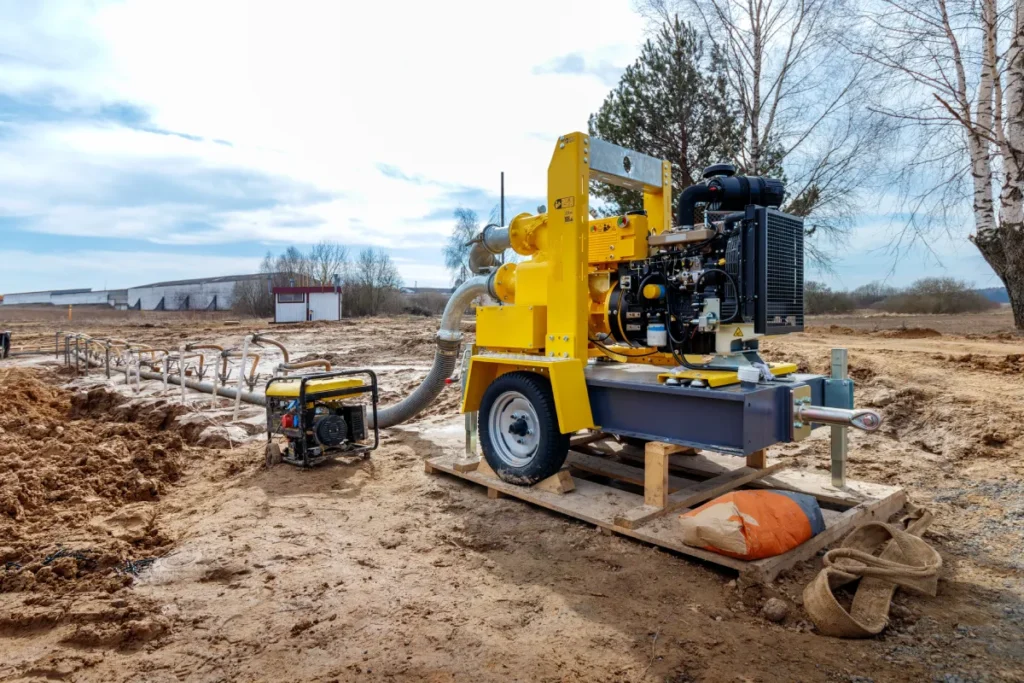
What Are Self-Priming Dewatering Pumps?
Self-priming dewatering pumps are centrifugal pumps that automatically remove air from the suction line and establish the vacuum required to begin pumping liquids without operator intervention. Unlike traditional units, which require an operator to fill the suction line before starting, these pumps feature a built-in priming chamber that stores sufficient liquid to enable automated priming whenever air enters the system. This feature makes the self-priming dewatering pump particularly useful in applications that require reliability, portability, and rapid reactivation after shutdown.
From a technical perspective, self-priming dewatering pumps utilize a priming chamber and impeller system that work together to mix air and liquid during startup. The resulting air-liquid mixture is expelled through the discharge line, while the remaining liquid stays in the casing for the next priming cycle. This process enables the pump to draw fluid from below its elevation, a crucial capability in remote or temporary dewatering setups, such as construction trenches, flooded basements, and mining pits.
To meet varying site requirements, self-priming dewatering pump sets are commonly supplied as complete systems, integrating the pump, engine or motor, fuel tank, and skid base. These configurations reduce the need for on-site assembly and simplify transport between project locations. For operations requiring even higher mobility, self-priming dewatering pump packages are available with trailer-mounted or containerized designs, equipped with integrated control panels, hoses, and protective frames. This all-in-one structure minimizes installation time and ensures readiness for both planned and emergency dewatering applications.
Self-priming dewatering pumps are also valued for their ability to handle air-water mixtures, abrasive fluids, and solids-laden water without losing suction. Their robust construction allows them to operate efficiently in challenging environments where conditions fluctuate, such as construction excavations, flood response operations, or open-pit mining dewatering. These systems are equally suited for wastewater bypass projects, where downtime or air-lock failures can disrupt critical municipal or industrial processes.
In the Philippine context, self-priming dewatering pump sets and self-priming dewatering pump packages are widely used due to the country’s frequent exposure to flooding and heavy rainfall. Their automatic priming ability, combined with reliable performance in mixed-fluid environments, makes them a practical and cost-effective choice for both government and private sector projects requiring continuous, unattended operation.
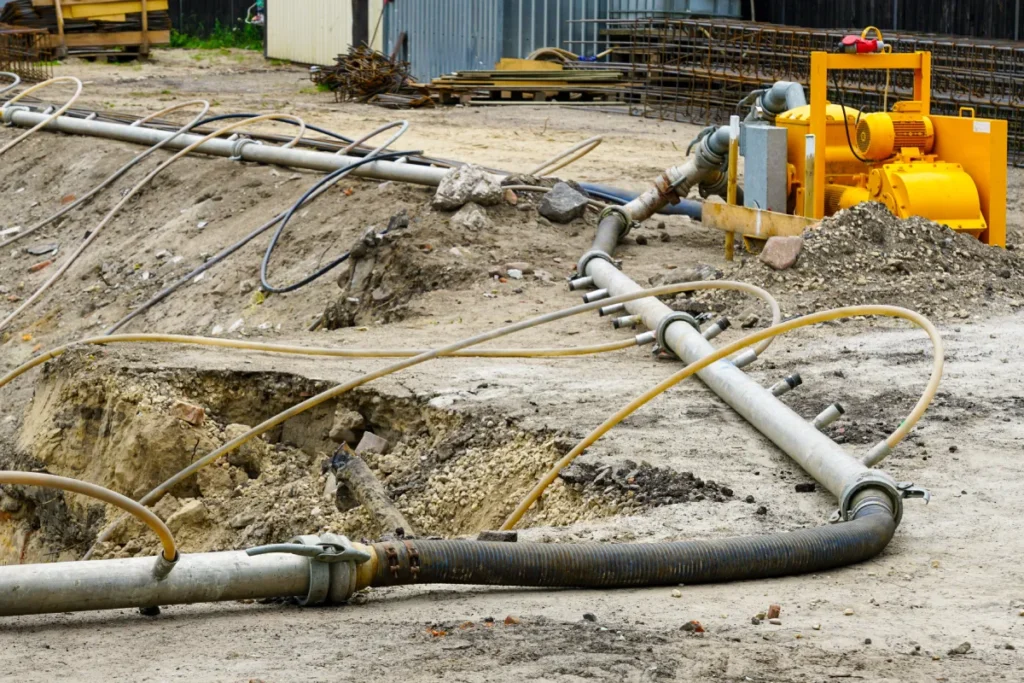
What Are Standard Dewatering Pumps?
Standard dewatering pumps, also known as non-self-priming centrifugal pumps, have a simpler design and require external or manual priming before they can operate. They cannot automatically clear air from the suction line; instead, they rely on methods such as foot valves, vacuum priming systems, or manual filling to initiate operation. Once primed, they efficiently move liquid as long as the suction integrity is maintained. However, if air re-enters the system, the pump must be manually reprimed to resume operation..
Because of this dependency, standard dewatering pumps are best suited for fixed or controlled installations where water levels remain relatively stable, such as permanent drainage systems, sediment basins, or industrial wastewater treatment facilities. They are highly efficient under steady suction conditions and often deliver superior hydraulic performance in low-suction or flooded suction applications.
Despite their efficiency, these conventional units require more hands-on monitoring and can pose challenges in mobile or emergency applications where frequent setup and relocation are needed. In contrast, self-priming dewatering pumps can automatically restart after air ingress, making them far more convenient in unpredictable environments.
Standard dewatering pumps remain a reliable choice for users who prioritize simplicity, cost-effectiveness, and low-maintenance operation within predictable operating conditions. Their straightforward design and easy-to-service components continue to make them popular across industrial and municipal settings where priming assistance is readily available and site conditions are stable.
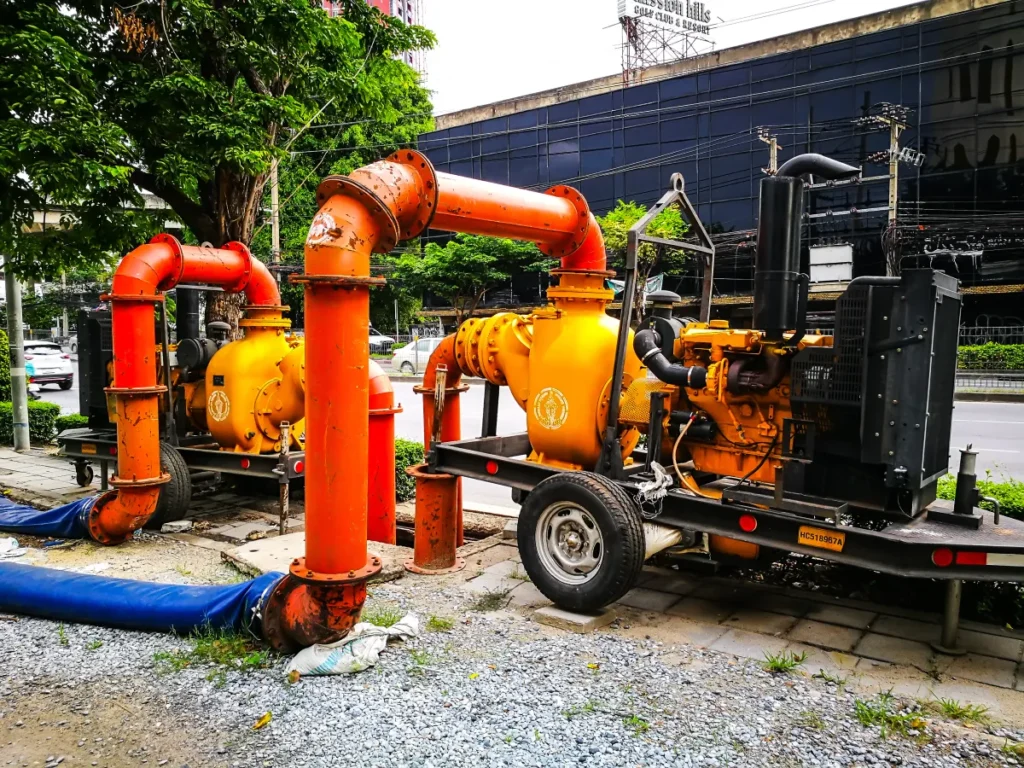
Key Differences Between Self-Priming and Standard Dewatering Pumps
When evaluating dewatering systems for industrial, construction, or municipal use, it is essential to understand the distinctions between self-priming dewatering pumps and standard centrifugal units. These differences affect not only operational performance but also installation logistics, maintenance planning, and overall return on investment.
Self-priming dewatering pump sets are designed with an internal priming chamber that enables automatic air removal after the initial fill, ensuring uninterrupted pumping even when the suction line contains air. This built-in mechanism gives them an advantage in environments where water levels fluctuate or where constant operator supervision isn’t feasible. Standard dewatering pumps, by contrast, require manual or assisted priming every time air enters the suction line, resulting in increased downtime and labor costs.
From an installation perspective, self-priming dewatering pump sets offer superior flexibility, as they can be positioned above the liquid source, making them ideal for flood-prone or hard-to-access areas. Standard pumps must be installed below the water level or supported by foot valves to maintain suction, which limits placement options.
Efficiency also varies between the two systems. While standard dewatering pumps tend to achieve slightly higher hydraulic efficiency under stable conditions, self-priming dewatering pumps provide consistent performance across diverse terrains and operating environments. Their design minimizes the need for re-priming and enables faster restarts after suction interruptions.
Maintenance and operational cycles further separate the two types. Self-priming dewatering pump packages are more sophisticated in construction, requiring periodic inspection of seals and priming chambers to ensure optimal performance. However, their automation reduces the need for manual intervention and unplanned shutdowns. In contrast, standard pumps feature simpler components but demand frequent attention due to their reliance on external priming systems.
In terms of cost-effectiveness, self-priming dewatering pump sets often involve a higher initial investment but deliver better long-term ROI through reduced labor, faster mobilization, and lower downtime. Standard pumps remain economical for stationary installations with consistent water levels, but their operational overhead can accumulate in dynamic field conditions.
Overall, for industries prioritizing mobility, responsiveness, and operational reliability, self-priming dewatering pump sets and self-priming dewatering pump packages present a smarter, more adaptable choice that aligns with modern dewatering requirements.
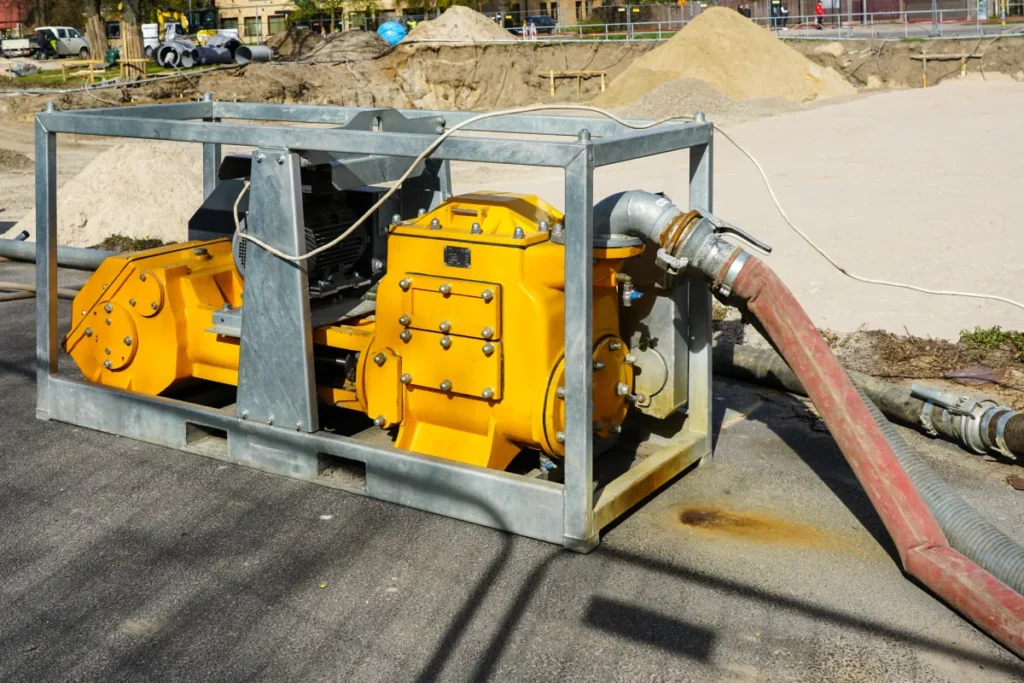
Advantages of Self-Priming Dewatering Pumps
The growing preference for self-priming dewatering pumps across the Philippines and other industrial regions stems from their proven ability to simplify water management in complex environments. These systems combine technical efficiency with operational practicality, providing substantial benefits across various projects, including construction, mining, and flood mitigation.
Automatic Operation:
One of the most significant advantages of self-priming dewatering pumps is their fully automatic priming capability. Once initially filled, the pump automatically re-primes after air enters the suction line, eliminating the need for continuous manual monitoring. This feature enables self-priming dewatering pump sets to operate efficiently in remote or unattended locations, thereby saving time and labor costs.
Operational Continuity:
Because they can handle air and liquid mixtures simultaneously, self-priming dewatering pumps maintain stable operation without losing suction. This characteristic is especially valuable in construction sites or municipal bypass applications where water levels can drop unpredictably.
Flexibility and Portability:
The modular nature of self-priming dewatering pump packages allows for rapid setup in temporary installations. These systems are often skid- or trailer-mounted, making them ideal for emergency dewatering during floods, tunnel drainage, or infrastructure repair. Their adaptability ensures that critical operations continue even under unpredictable conditions.
Versatility Across Fluids:
Self-priming dewatering pumps are versatile, capable of managing various fluid types, including clean water, muddy water, and slurries with solids. This adaptability makes them ideal for industrial and environmental tasks such as dewatering quarry pits, removing sediment, and managing stormwater.
Reduced Downtime:
The self-priming feature minimizes operational interruptions caused by air ingress or suction loss. This benefit is particularly crucial for projects that require continuous pumping, such as flood control systems in Metro Manila or open-pit mining in Mindanao. In such applications, self-priming dewatering pump sets deliver uninterrupted performance, reducing costly delays and ensuring project stability.
Safety and Accessibility:
Because self-priming dewatering pump packages can be installed above ground and above the liquid source, operators do not have to work in submerged or confined areas. This not only improves site safety but also streamlines normal maintenance and inspection operations.
For example, in a typical quarry dewatering operation in Central Luzon, using self-priming dewatering pumps on the surface rather than submerging standard pumps significantly reduces setup time and exposure to maintenance. The pump’s ability to automatically re-prime after water fluctuations ensures continuous drainage, keeping operations efficient and in accordance with safety regulations.
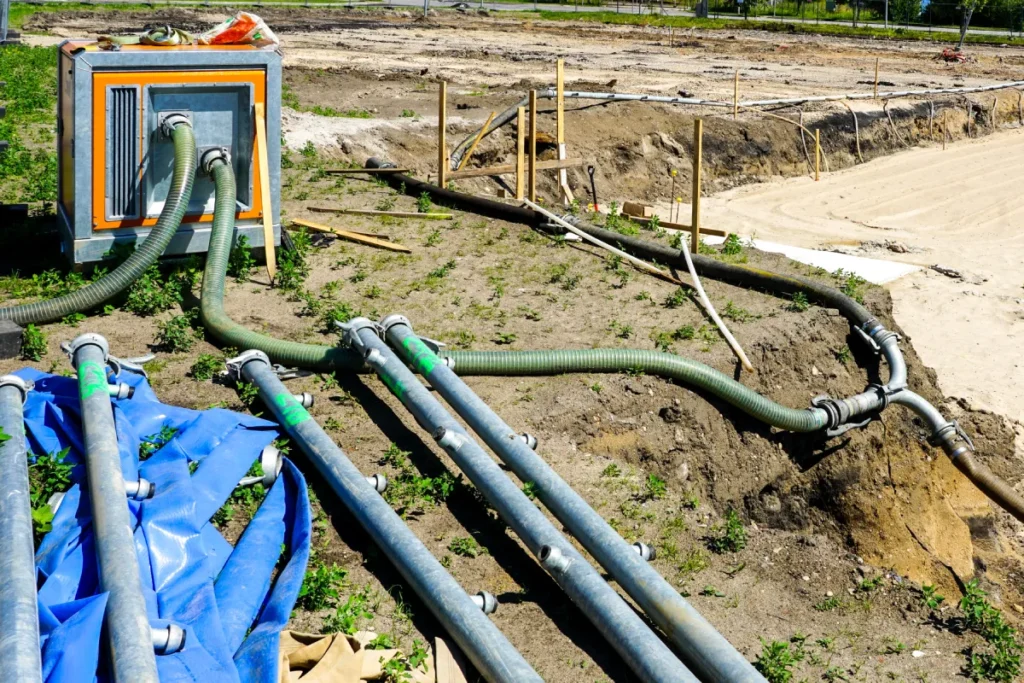
Choosing the Right Pump for Your Application
Selecting the most suitable dewatering system requires careful evaluation of several operational and environmental factors. The specific project conditions should guide decisions, the type of fluid being handled, and the level of mobility and automation required on-site.
1. Site Layout and Installation Requirements
The design of a worksite, whether it’s an open pit, underground tunnel, or municipal drainage area, is critical in determining the best pump type. Self-priming dewatering pumps are suitable for sites where pumps must be located above the liquid source, as they include an integrated priming mechanism that eliminates the need for submersion. Standard centrifugal units, on the other hand, operate effectively in situations where flooding suction is conceivable, such as permanent pumping stations or sediment basins.
2. Suction Distance and Head Pressure
Projects with variable suction distances benefit greatly from self-priming dewatering pumps, as these systems can maintain consistent priming across moderate suction heights. For deeper applications where suction lift exceeds recommended limits, an alternative submersible or vacuum-assisted setup may be more appropriate.
3. Fluid Characteristics and Solids Handling
When dealing with abrasive or solids-laden water, common in mining, quarrying, or floodwater removal, self-priming dewatering pump sets provide greater reliability. Their wider passages and priming chambers enable continuous operation even when air and water mix, thereby minimizing the risk of blockages and cavitation. For clear water transfer or low-solids content, a standard dewatering pump may deliver higher efficiency and lower power consumption.
4. Mobility and Deployment Speed
For mobile or short-term projects, self-priming dewatering pump packages are the preferred option. These all-in-one units combine the pump, engine, and control system on a skid or trailer, allowing for fast setup and easy relocation. In contrast, standard pumps are more suitable for stationary installations where operating conditions remain predictable and downtime can be planned.
5. Operational Cost and Maintenance Factors
While self-priming dewatering pumps may have a higher upfront cost, their reduced need for manual priming, rapid start-up capability, and lower maintenance frequency often result in better overall ROI. For applications that require continuous supervision or have on-site technicians readily available, standard pumps can still be a cost-effective option.
Quick Selection Reference
| Project Type / Condition | Recommended Solution | Key Benefit |
| Mobile or emergency sites | Self-priming dewatering pumps | Fast deployment, minimal setup |
| Flood control or municipal drainage | Self-priming dewatering pump sets | Continuous operation with air-handling capability |
| Mining or quarry pits | Self-priming dewatering pump packages | Handles abrasive fluids and variable suction |
| Fixed industrial or wastewater plants | Standard dewatering pumps | High efficiency, simple maintenance |
| Temporary bypass pumping | Self-priming dewatering pumps | Automatic re-priming after interruptions |
The right pump choice strikes a balance between efficiency, reliability, and practicality, ensuring that operations remain productive even under unpredictable site conditions.
Maximizing Efficiency and Reliability in Dewatering
Understanding the performance differences between self-priming dewatering pumps and standard centrifugal systems is crucial for making informed procurement and engineering decisions. While both serve essential roles, self-priming dewatering pumps stand out for their ability to combine automation, versatility, and reliability, attributes that significantly improve project uptime across industries.
From construction and mining to municipal infrastructure, these pumps deliver measurable advantages in operational flexibility and cost efficiency. Self-priming dewatering pump sets are designed for quick deployment in challenging or remote conditions, while self-priming dewatering pump packages offer a fully integrated solution that simplifies logistics and maintenance. Their proven performance in handling air, slurry, and fluctuating water levels ensures dependable results in environments where standard systems would struggle to perform.To ensure projects are equipped with the most suitable self-priming dewatering pumps, specifically engineered for the demands of Philippine industries, contractors, engineers, and facility managers can consult with an expert team like Dredge Pump Pros. This partnership helps achieve a balance between reliability and operational speed.

